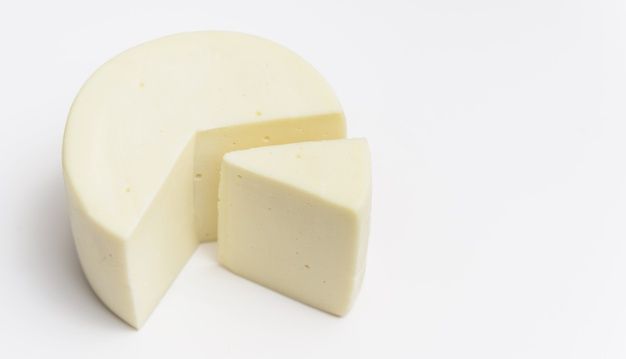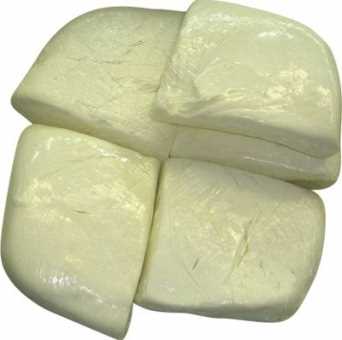Mengen Cheese is a traditional cheese variety produced within the borders of the Mengen district of Turkey's Bolu province, protected by a geographical indication (Designation of Origin). This low-fat and semi-hard cheese resembles kaşar cheese with its light yellow color, cylindrical form, and appearance. According to historical records, especially in Ottoman salnames (provincial yearbooks) from the early 20th century (1916 Independent Bolu Sanjak Salname, 1921-1925 Bolu Liva Salname), it is stated that Mengen Cheese has a taste and flavor close to kaşar cheese, and that the cheese of the Mengen sub-district (nahiye) is famous. It is also known as "village cheese" or "peasant cheese" in the region and holds an important place in the culinary culture of the Mengen district. It was registered as a "Designation of Origin" on October 6, 2023 (Application: November 13, 2018) (Registration No: 1482). All production, processing, and other operational stages must take place within the geographical boundary of the Mengen district of Bolu province.

Mengen Cheese (Bolu Belediyesi)
Raw Material and Production Method
Mengen Cheese is produced using milk obtained from cows or sheep raised within the geographical boundary. According to the registration document, pasteurized milk (at least 63°C for 30 minutes) is used in production, and coagulation with industrial rennet (at approximately 37°C for 1 hour) is preferred. However, academic studies on traditional methods document the use of raw milk and homemade calf rennet. In both approaches, the most distinctive feature is the scalding (haşlama) process. The curd, after being cut and rested for a while, is heated in the whey up to approximately 45-55°C (45-50°C in traditional, 50-55°C in registered). At this temperature, the curd is gathered by stirring by hand or with a skimmer and formed into a firm mass. The scalded curd (teleme) is placed in cylindrical molds with perforated bottoms, and weight is placed on it, pressing it for 8-12 hours (in registered) or overnight (in traditional). Afterward, dry salting is applied to the outer surface of the cheese with coarse brine salt. According to the registered method, the salted cheese is kept at 4°C for one day, vacuum-packaged, and offered for sale.
Physical, Chemical, and Microbiological Characteristics
Mengen Cheese has a light yellow color (Color parameters: L: 85.41±3.32, b: 19.65±2.49). It has a hard texture (average hardness: 5750.46±2449.05 g); this characteristic becomes more pronounced especially in summer months and as the salt content increases. It is classified as a low-ripened (az olgunlaştırılmış) cheese due to its low ripening index (below 33%) and not being ripened for a minimum of 45 days as required by the Turkish Food Codex. The lipolysis value (ADV) is also low, indicating limited fat breakdown. The use of raw milk and high water activity promote microbial growth.

Mengen Cheese (Kültür Portalı)
Textural and Aromatic Profile
The scalding process facilitates the removal of whey, contributing to the formation of a firm and hard texture. Mengen Cheese exhibits a broad texture profile in parameters such as hardness, elasticity, gumminess, and chewiness. It is very rich in terms of aromatic profile; a total of 130 different volatile components have been identified. These include 17 ketones (diacetyl/acetoin, 2-pentanone, 3-pentanone dominant), 25 aldehydes (valeraldehyde, pelargonaldehyde), 30 esters (ethyl-butyrate, ethyl-capronate, ethyl-octanoate, phenethyl-acetate), 18 alcohols (phenethyl alcohol, methyl pentanol), 7 acids (butyric acid, isobutyric acid, caproic acid), 14 hydrocarbons, 7 terpenes (L-limonene - notes of wild mint, cumin, thyme oil), and 12 miscellaneous compounds (mercaptan, lactones). This composition is a result of the raw milk flora and the limited ripening process.
Consumption, Shelf Life, and Inspection
Mengen Cheese is consumed fresh, ripened, or traditionally fried in a pan or grilled. Its textural properties after frying also allow it to be considered as an alternative to Cypriot halloumi cheese. The average shelf life is two months; this period is limited due to low salt content and high microbial load (especially in the raw milk version).
The phrase "Mengen Peyniri" and the designation of origin emblem must be present on the product itself or its packaging. Inspections within the scope of the geographical indication are carried out under the coordination of the Mengen District Governorship; by an inspection authority (denetim mercii) consisting of at least four experts from the District Governorship, District Directorate of Agriculture and Forestry, Mengen Municipality, and the TMMOB Chamber of Food Engineers Bolu Provincial Representation, at least once a year and regularly in case of complaint or need. In the inspections, the suitability of raw materials, adherence to the production method, physical and chemical characteristics, and the correct use of the geographical indication emblem are checked. Mengen Cheese is an important and protected part of the gastronomic heritage of the Bolu-Mengen region.


